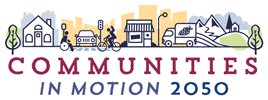Managing Congestion
- Do you cringe at the thought of driving during rush hour?
- Have you taken transit to avoid the hassles of driving, only to have your bus get stuck in gridlock anyway?
- Did your takeout arrive cold because the driver got caught in game-day traffic?
- Have you ever been late to an appointment because a crash shut down the road?

Traffic congestion affects us all at one time or another, even if we’re not the one behind the wheel.
Traffic congestion is easy to spot—it’s too many vehicles on a road at a given time.
Some congestion occurs routinely, such as daily “rush hour” traffic; however, not all congestion is as predictable. Road construction, traffic crashes, inclement weather, special events, or emergencies can cause congestion at any time or location.
What’s being done about it?
Managing congestion is not quite as easy as recognizing it. However, the first thing to consider when looking at strategies is that usually congestion is not simply a “road” issue but is a systemic issue — both the causes and solutions encompass all parts of the transportation system.
COMPASS’ Congestion Management Process and Complete Network Policy work in tandem to manage congestion by identifying the best routes for different travel modes and ways to improve reliability and efficiency beyond simply building more roads.
For example, improving bike lanes along bike-focused corridors not only provides for a safer biking experience, but also reduces conflicts with other modes on other corridors and helps promote biking, which helps decrease the number of cars on the road.
Other types of congestion management strategies include timing traffic signals, better informing commuters of road and travel conditions, increasing bus service, encouraging alternate work schedules, and reducing or eliminating left turns into or out of driveways and parking lots.
Are the strategies really being used?
Yes, they are. The use of congestion management strategies – particularly strategies that do not add roadway capacity (e.g., do not add lanes) – are considered when prioritizing projects for funding.
For example, when selecting projects for funding in the regional transportation improvement program, projects that use these types of “non-capacity” strategies receive a higher score for that criteria than those that do not.

